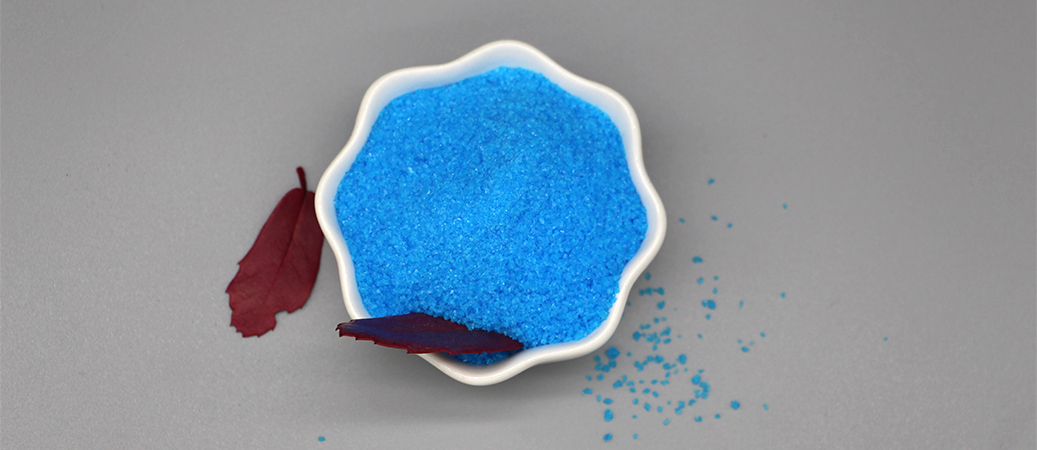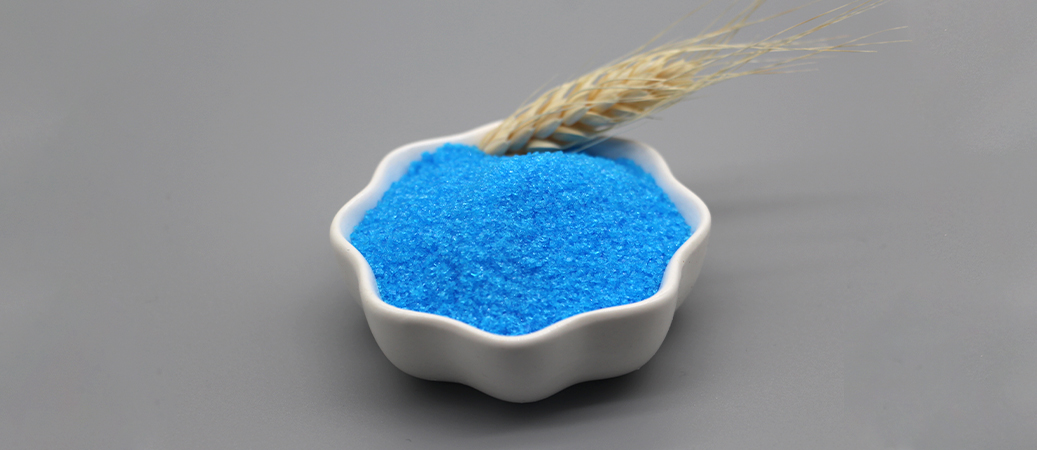Copper sulfate (chemical formula: CuSO₄), a key inorganic compound, is widely used in agriculture. Its unique chemical properties and antibacterial properties make it a common tool for farmers and gardeners. The following article will explore copper sulfate’s specific uses in agriculture, its mechanisms of action, its usage, and precautions.
1. Sterilization and disinfection: the core role in preventing and controlling crop diseases
Copper sulfate’s most widely known agricultural use is as a fungicide, particularly effective against fungal diseases. Its mechanism of action is to disrupt the integrity of pathogen cell membranes through copper ions, interfering with enzyme activity and thereby inhibiting spore germination and mycelial growth. Common applications include:
1. Controlling fruit tree diseases: such as apple and pear scab, grape downy mildew, and citrus canker. For example, a 0.5%-1% Bordeaux mixture (a mixture of copper sulfate and lime) can effectively prevent outbreaks of grape downy mildew.
2. Controlling vegetable diseases: Regular spraying of tomato early blight and potato late blight with copper sulfate solution can reduce the incidence of these diseases by over 60%.
3. Seed treatment: Soaking seeds in a 0.1%-0.5% copper sulfate solution can kill pathogens attached to the seed surface, such as wheat bunt and rice bakanae.
2. Nutritional supplementation: the key to correcting copper deficiency
Copper is an essential trace element for plants, involved in photosynthesis, respiratory metabolism, and the development of antioxidant systems. When the available copper content in the soil falls below 2 mg/kg, crops are prone to copper deficiency symptoms:
- Typical symptoms: chlorosis and wilting of new leaves, and poor ear development in cereal crops (such as wheat white ear disease).
- Solution: Apply a 0.02%-0.05% copper sulfate solution to the leaves, or apply 1-2 kg/mu of copper sulfate mixed with organic fertilizer as a base application.
3. Soil Improvement: Adjusting pH and Remediating Heavy Metal Pollution
Copper sulfate can be used for soil improvement under specific circumstances:
1. Alkaline soil conditioning: In soils with a pH greater than 8, copper sulfate can partially neutralize the alkalinity while providing copper available to plants.
2. Heavy metal pollution remediation: It fixes excess zinc, cadmium, and other heavy metals in the soil through ion exchange, reducing their bioavailability. However, long-term use may lead to copper accumulation, so it is recommended to combine with organic matter application.
4. Special Uses: Diverse Applications from Weed Control to Freshness Preservation
1. Weed Control: A 5%-10% high-concentration copper sulfate solution can kill aquatic weeds and is commonly used for cleaning rice paddies and ditches.
2. Postharvest Treatment: Soaking citrus fruits, such as apples, in a 0.1% copper sulfate solution can extend the storage life and inhibit storage diseases such as penicillium.
3. Aquaculture Water Disinfection: Using 200-300g of copper sulfate per acre of water surface can prevent gill mold and parasites in fish.
5. Scientific Usage Guidelines and Risk Control
Although copper sulfate is highly effective, improper use can cause phytotoxicity or environmental pollution:
- Concentration Control: Do not use with alkaline pesticides or phosphate fertilizers for foliar spraying, and 3 kg per mu for soil treatment.
- Incompatibility: Do not mix with alkaline pesticides or phosphate fertilizers. Mix with potassium dihydrogen phosphate immediately before use.
- Safety Interval: Discontinue use 20 days before harvest.
- Environmental Risks: Copper ions have a half-life of 10-30 years in soil. Leaf analysis (critical value 5-20 mg/kg dry weight) is recommended to guide use and avoid cumulative contamination.
Post time: Sep-23-2025



